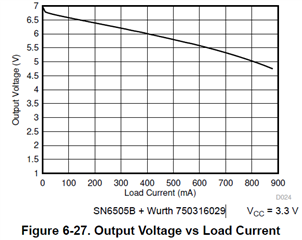Hello,
I would like to step-up 3.3V to 5V at a load current of 300mA. I want to estimate worst case output voltage or worst case input voltage for LDO and Input current consumption at full load. Do you have a formula for the same ? As mentioned in datasheet I want to use Wurth 750316029 as push pull transformer.
Also,
The output voltage mentioned in the below graph regards Shottky diode drop as well or its just the secondary voltage before rectified diode ?

Thanks & Regards,
Manoj.




